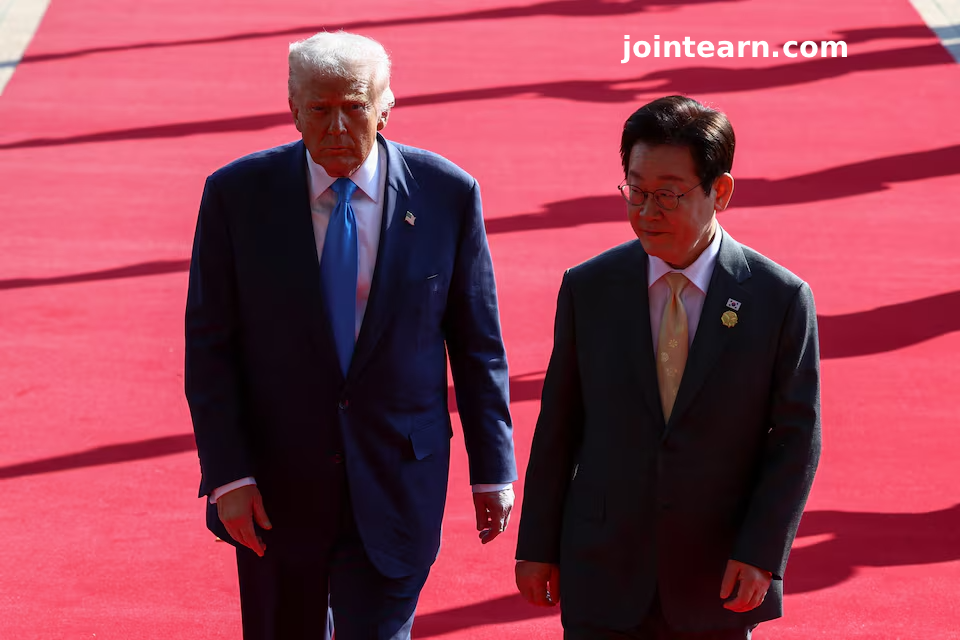
The United States and South Korea unveiled details of a landmark trade and investment agreement on Friday, featuring a $150 billion South Korean investment in U.S. shipbuilding and an additional $200 billion earmarked for industrial sectors, aimed at strengthening economic and security ties between the two allies.
The announcement follows an October meeting between South Korean President Lee Jae Myung and U.S. President Donald Trump, during which the leaders agreed to reduce U.S. import duties on South Korean products from 25% to 15%, easing long-standing trade tensions.
Key Features of the Deal
- Shipbuilding and Defense Cooperation: South Korea will partner with the U.S. on shipbuilding, artificial intelligence, and nuclear industries. The deal includes approval for South Korea to build nuclear-powered submarines, with U.S. collaboration on fuel sourcing and technical support.
- Industrial Investments: South Korea will invest $200 billion in U.S. industrial sectors over the coming years. The funds will be transferred in installments not exceeding $20 billion annually to ensure stability of the Korean won and avoid market disruption.
- Memorandum of Understanding: South Korea’s Industry Minister Kim Jung-kwan and U.S. Commerce Secretary Howard Lutnick signed a 27-point, non-binding MOU, outlining project schedules and strategic investments. Implementation decisions will be finalized by the U.S. president after consultations with Seoul.
Strategic and Economic Implications
The trade deal marks a major diplomatic and economic achievement for President Lee, who assumed office just five months ago. By transforming potential trade conflicts over tariffs on semiconductors, autos, and other key exports into a cooperative investment framework, South Korea has strengthened its economic and security standing with the United States.
The agreement also includes provisions for nuclear energy cooperation, allowing South Korea to enrich uranium and reprocess spent nuclear fuel domestically. Analysts note that while the deal boosts South Korea’s industrial and defense capabilities, it could also involve higher costs for national security.
Lee emphasized that the agreement “rebuilds crucial industries just as the U.S. helped South Korea in the past,” while ensuring that investments would not destabilize financial markets.
Tariffs and Trade Benefits
Under the deal, tariffs on South Korean autos will be reduced to 15%, while semiconductor tariff terms will remain no less favorable than those for Taiwan, offering South Korea a competitive advantage in technology exports.
Analysts caution that while the deal strengthens U.S.-South Korea cooperation in energy, defense, and industrial sectors, the full economic impact will depend on the implementation of investment schedules and collaboration in nuclear and AI technologies.


Leave a Reply